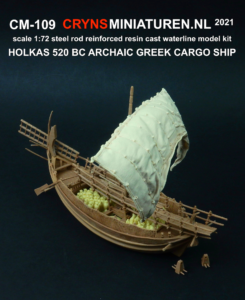[161b] κομίσαντες οὖν ἐπὶ σκηνὴν αὐτόν, ὡς οὐδὲν εἶχε κακὸν ἀλλ᾽ ἢ διὰ τάχος καὶ ῥοῖζον ἐφαίνετο τῆς φορᾶς ἐκλελυμένος καὶ κεκμηκώς, ἠκούσαμεν λόγον ἄπιστον ἅπασι πλὴν ἡμῶν τῶν θεασαμένων τὸ τέλος. ἔλεγε γὰρ Ἀρίων ὡς πάλαι μὲν ἐγνωκὼς ἐκ τῆς Ἰταλίας ἀπαίρειν, Περιάνδρου δὲ γράψαντος αὐτῷ, προθυμότερος γενόμενος, ὁλκάδος Κορινθίας παραφανείσης, εὐθὺς ἐπιβὰς ἀναχθείη, μετρίῳ δὲ πνεύματι χρωμένων ἡμέρας τρεῖς αἴσθοιτο τοὺς ναύτας ἐπιβουλεύοντας [161c] ἀνελεῖν αὐτόν, εἶτα καὶ παρὰ τοῦ κυβερνήτου πύθοιτο κρύφα μηνύσαντος ὡς τῇ νυκτὶ τοῦτο δρᾶν αὐτοῖς εἴη δεδογμένον.
- Map
- Pre Reading
- Post Reading
- Culture Essay
n/a
Plutarch begins his story mentioning that Gorgus had just returned from Taenarum (Cape Matapan), the southernmost tip of Greece. In this passage, we learn that Arion is returning from Tarentum in southern Italy. Use Orbis: The Stanford Geospatial Network Model of the Roman World to measure the time and cost of sailing from these two sites to Corinth. Then change the variables and see how long it might take to travel by land. Finally, how long would the sailors expect it to take to sail from Tarentum? And how long does it actually take Arion?
To learn more about ancient maritime trade, check out “Ancient maritime trade networks & internodal hubs,” Ancient Ports – Ports Antiques.

